Social media marketing isn’t just about posting content and hoping for the best. With over 5.24 billion active social media users worldwide and platforms constantly evolving, brands need a strategic approach to cut through the noise and achieve measurable results.
The difference between successful social media marketing and random posting lies in having a documented plan. Companies with strategic social media plans are 313% more likely to report success, yet many businesses still approach social media reactively rather than strategically.
The easiest way to manage and grow your social channels.

What is a social media marketing plan?
A social media marketing plan is a comprehensive document that outlines your brand’s social media objectives, target audience, content strategy, and measurement framework. It serves as your roadmap for turning social media activity into tangible business results.
Key components of a social media marketing plan:
- Clear business objectives and KPIs
- Target audience analysis and buyer personas
- Platform selection and optimization strategies
- Content strategy and calendar
- Budget allocation and resource planning
- Analytics and measurement framework
Strategy vs. Plan: Understanding the difference
Your social media strategy is the high-level vision of what you want to achieve and why. Your social media plan serves as the tactical roadmap for executing your strategy, outlining specific actions, timelines, and necessary resources.
Why your business needs a social media marketing plan in 2025
The social media landscape has never been more competitive. Here’s why having a documented plan is crucial:
1. Measurable ROI and business impact
Companies with documented social media strategies are 313% more likely to report success than those without. A well-crafted plan helps you:
- Track meaningful metrics beyond vanity numbers
- Demonstrate clear ROI to stakeholders
- Optimize budget allocation for maximum impact
2. Competitive advantage
With 93% of consumers believing it’s important for brands to keep up with online culture, a strategic plan helps you:
- Stay ahead of industry trends
- Identify content gaps your competitors are missing
- Respond quickly to market changes and opportunities
3. Team alignment and efficiency
A documented plan ensures everyone on your team understands their role and objectives, leading to:
- Consistent brand messaging across platforms
- Streamlined content creation workflows
- Reduced time spent on last-minute decisions
Simplified social media marketing for individuals & agencies.
Try ContentStudio for FREE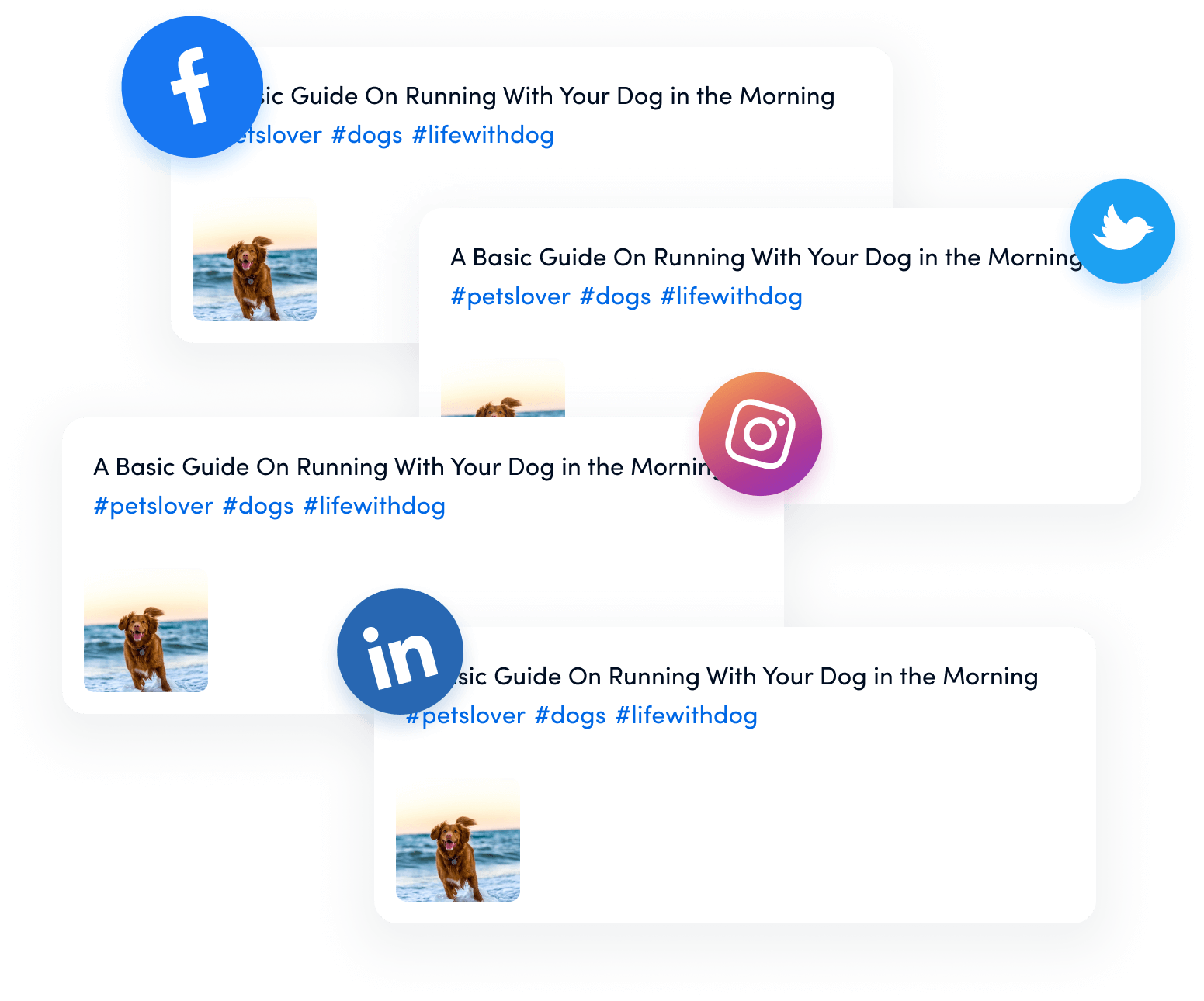
11 steps to build your social media marketing plan
Here’s a step-by-step guide to help you develop a comprehensive social media marketing plan:
Step 1: Conduct a social media audit
Before planning your future strategy, it is essential to understand your current position. A comprehensive social media audit reveals what’s working, what isn’t, and where opportunities lie.
Start by evaluating your current profiles for completeness and brand consistency. Analyze your top-performing posts from the past 90 days to identify content types that drive the most engagement. Review your audience demographics, growth trends, and activity patterns to understand when your followers are most active.
For competitor benchmarking, identify three types of competitors:
- Direct (same products/services)
- Indirect (same audience)
- Aspirational (brands you admire)
Track key metrics, such as follower growth rate, engagement per post, posting frequency, and customer service response times, to establish benchmarks within the industry.
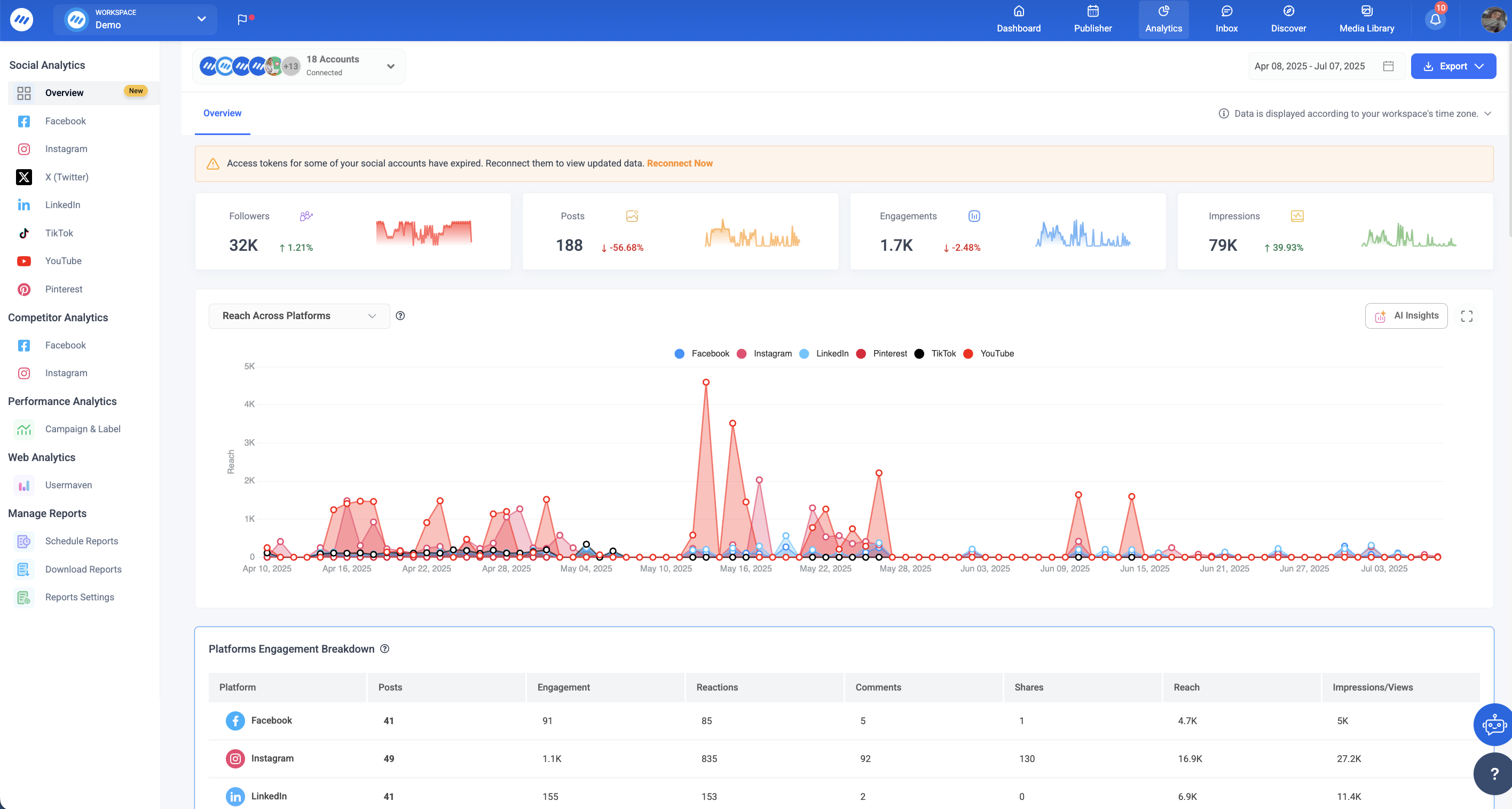
Step 2: Define your social media goals and objectives
Successful social media marketing starts with clear, measurable goals that align with your broader business objectives. Use the SMART framework to ensure your goals are Specific, Measurable, Achievable, Relevant, and Time-bound.
Common goal categories for 2025:
- Brand awareness: Increase brand mentions by 40% or reach 50,000 total followers
- Lead generation: Generate 500 qualified leads monthly or increase email sign-ups by 25%
- Sales goals: Achieve $100,000 in social commerce sales or drive 15% of total revenue
- Customer engagement: Maintain 5% engagement rate or respond to inquiries within 2 hours
Remember, your social media goals should align with your overall business objectives, not exist in isolation.
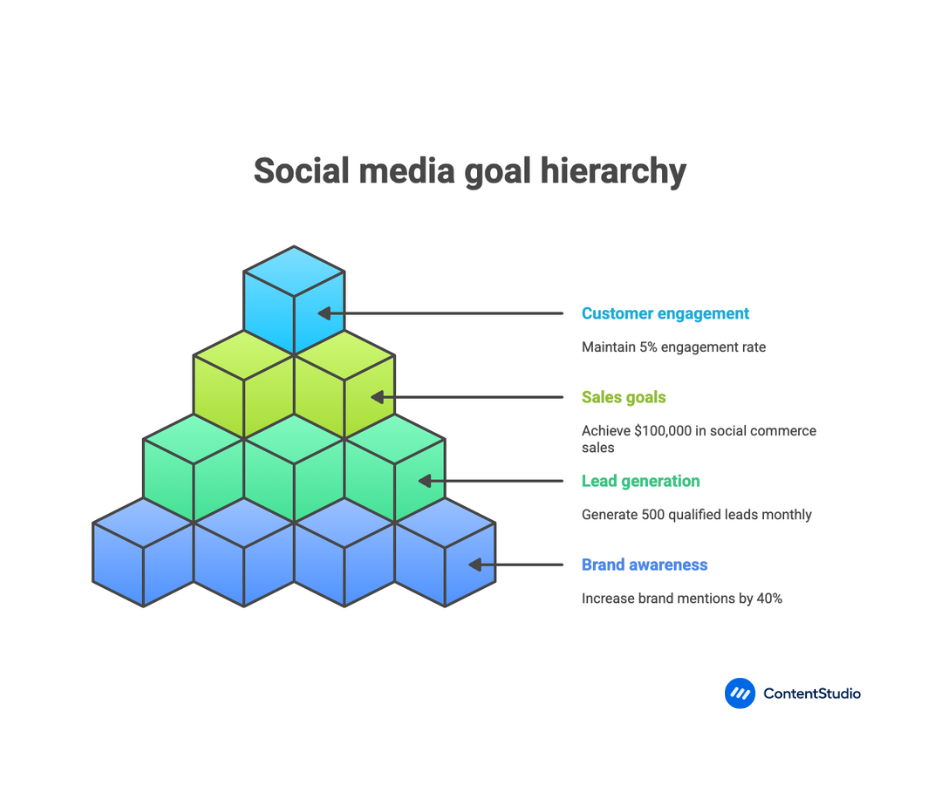
Step 3: Identify and research your target audience
Understanding your audience is crucial for creating content that resonates and drives action. Go beyond basic demographics to understand psychographics, behaviors, and platform-specific preferences.
Create detailed buyer personas that include:
- Demographic information (age, location, income)
- Psychographic insights (values, interests, pain points)
- Social media usage patterns.
Different platforms attract different audiences—Instagram skews younger, with a high visual preference; LinkedIn targets professionals during business hours, while TikTok dominates Gen Z, with a preference for authentic and entertaining content.
Utilize social media management tools like ContentStudio to identify common questions, trending topics, and sentiment surrounding your brand. This provides real-time insights into your audience’s needs and how you can better meet their requirements.
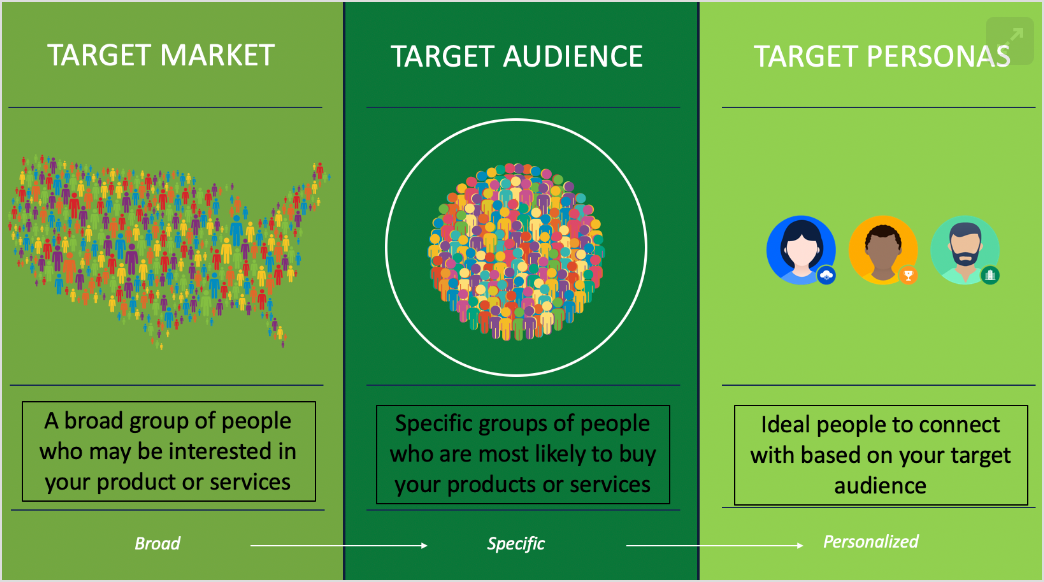
Step 4: Analyze your competition
A thorough competitive analysis reveals industry benchmarks, content gaps, and opportunities for differentiation.
Analyze your competitors’ content types, posting frequency, engagement patterns, and visual style to gain a deeper understanding of their strategies. Look at their community management approach, influencer partnerships, and paid advertising strategies. Pay attention to both what is working well and what is receiving negative feedback.
Conduct a SWOT analysis to identify your:
- Strengths (advantages over competitors)
- Weaknesses (areas needing improvement)
- Opportunities (content gaps to fill)
- Threats (competitive advantages you’re losing).
This framework helps you understand your current position and how to position yourself strategically.
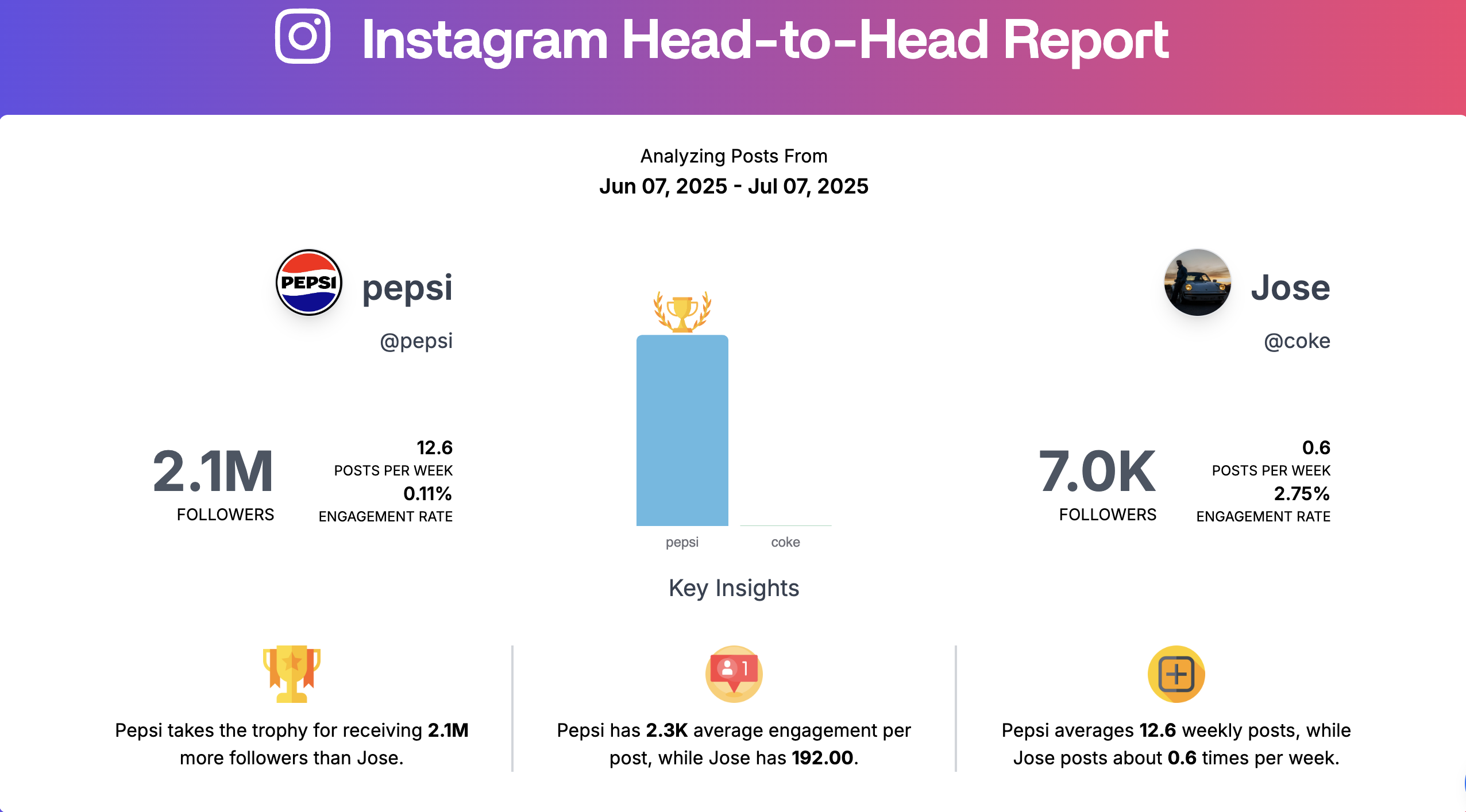
Step 5: Choose the right social media platforms
Not every platform is right for every business. Focus your efforts where your audience is most active and engaged.
Consider three key criteria when selecting platforms:
- Audience alignment (Is your target audience active here?)
- Content compatibility (Does your content work well on this platform?)
- Business objectives (Can you achieve your goals here?).
Platform priorities for 2025:
- Instagram: Visual storytelling, Reels, and shopping features
- TikTok: Authentic, entertaining short-form videos
- LinkedIn: B2B networking and professional thought leadership
- YouTube: Long-form content and SEO benefits
- Facebook: Community building and targeted advertising
Start with 2-3 platforms where you can maintain quality and consistency, then expand as you build capacity and expertise.
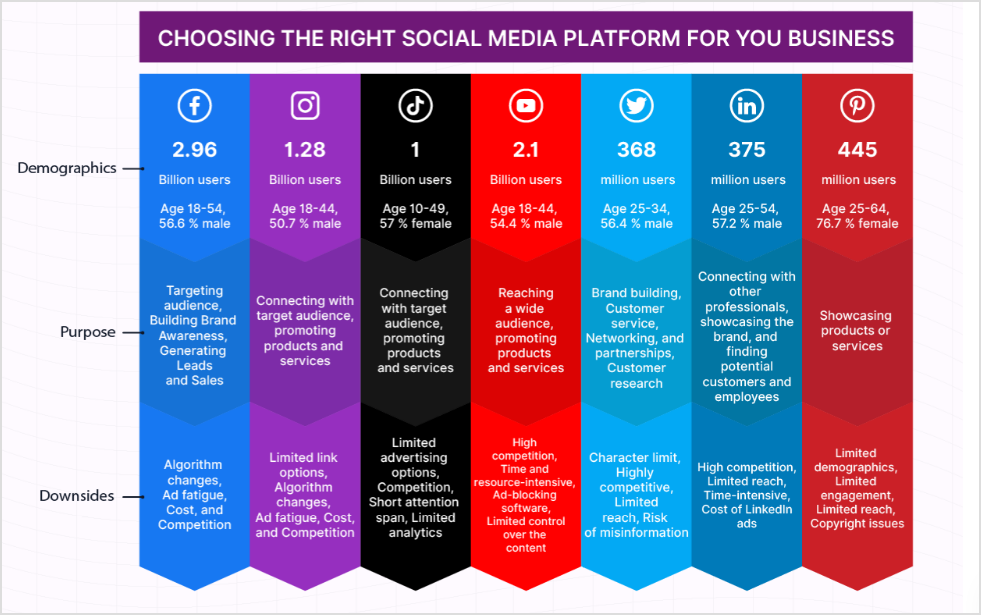
Step 6: Develop your content strategy
Your content strategy should provide value, build relationships, and drive action. Use the 80/20 rule: 80% valuable content (educational, entertaining, inspirational) and 20% promotional content.
Content pillar framework:
- Educational content (40%): How-to guides, industry insights, tips, and best practices
- Entertaining content (30%): Behind-the-scenes, team spotlights, trending content
- Promotional content (20%): Product launches, testimonials, special offers
- Inspirational content (10%): Motivational content, community highlights, success stories
High-performing content types for 2025:
- Short-form videos: Instagram Reels, TikTok videos, YouTube Shorts
- User-generated content: Customer testimonials, photo contests, hashtag campaigns
- Interactive content: Polls, quizzes, live Q&A sessions
- AI-enhanced content: Generated visuals, automated captions, personalized recommendations
Plan your content calendar monthly (themes and campaigns), weekly (content balance), and daily (real-time engagement and timely content).
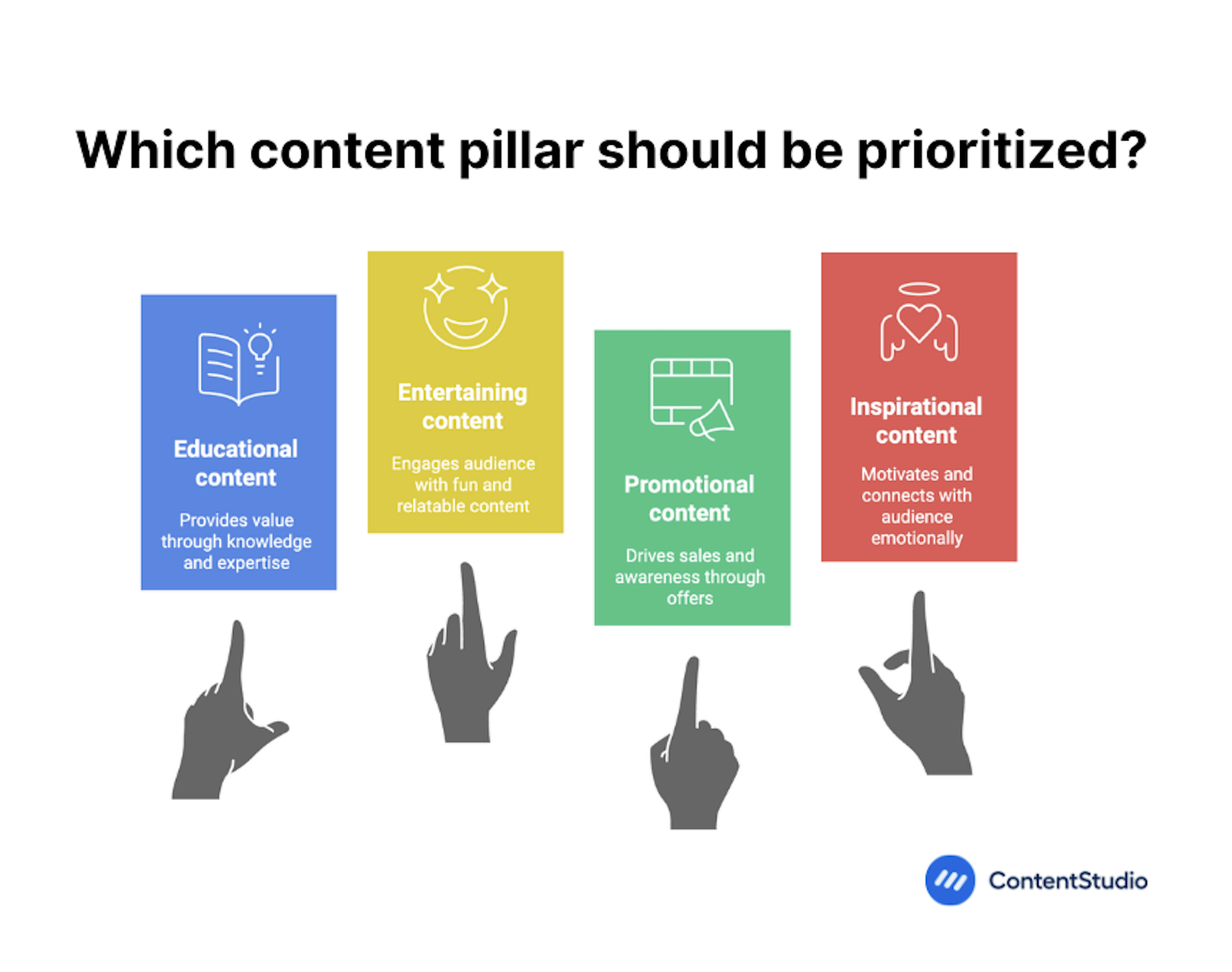
Step 7: Create your content calendar
A well-organized content calendar ensures consistency, prevents last-minute scrambling, and helps you maintain strategic focus.
Content calendar components
Essential elements:
- Publication date and time
- Platform and format specifications
- Content type and category
- Copy, hashtags, and visual assets
- Campaign or theme alignment
- Assigned team member responsibilities
Planning horizons:
- Annual: Major campaigns, product launches, seasonal content
- Quarterly: Campaign themes, budget allocation, platform priorities
- Monthly: Content themes, promotional activities, team capacity
- Weekly: Specific posts, engagement tactics, performance reviews
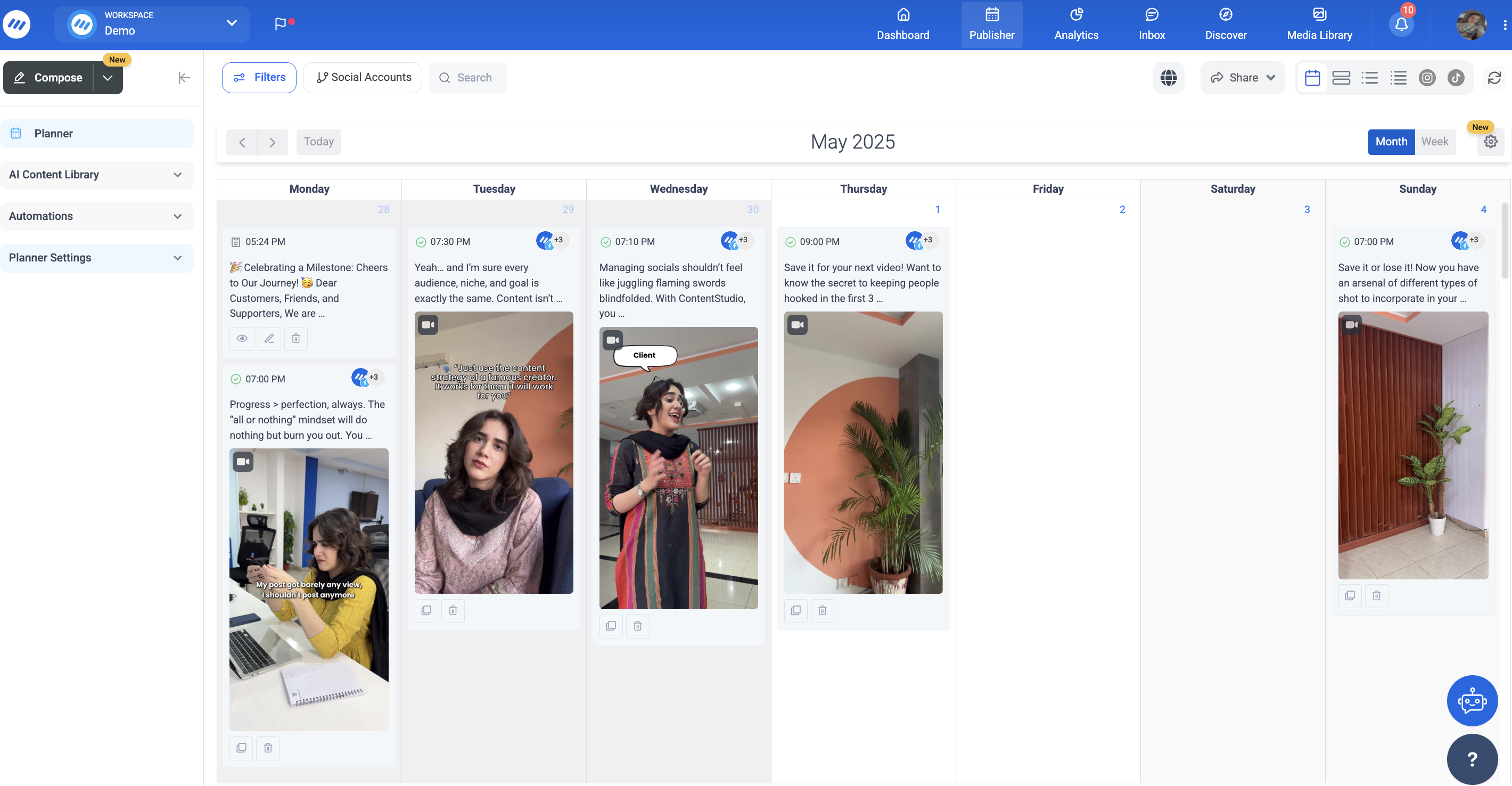
Related: 365-day social media content plan & calendar
Step 8: Establish your brand voice and visual identity
Consistent brand presentation across all platforms builds recognition and trust with your audience. Define your brand voice characteristics, including
- Tone (professional, friendly, authoritative)
- Personality (helpful, innovative, reliable)
- Communication style (formal, conversational, educational).
Adapt your voice for each platform while maintaining core consistency. LinkedIn should feel more professional and authoritative, while TikTok can be more authentic and playful. Create visual brand guidelines covering logo usage, color palette, typography, image filters, and template designs to ensure a cohesive visual presentation across all content.
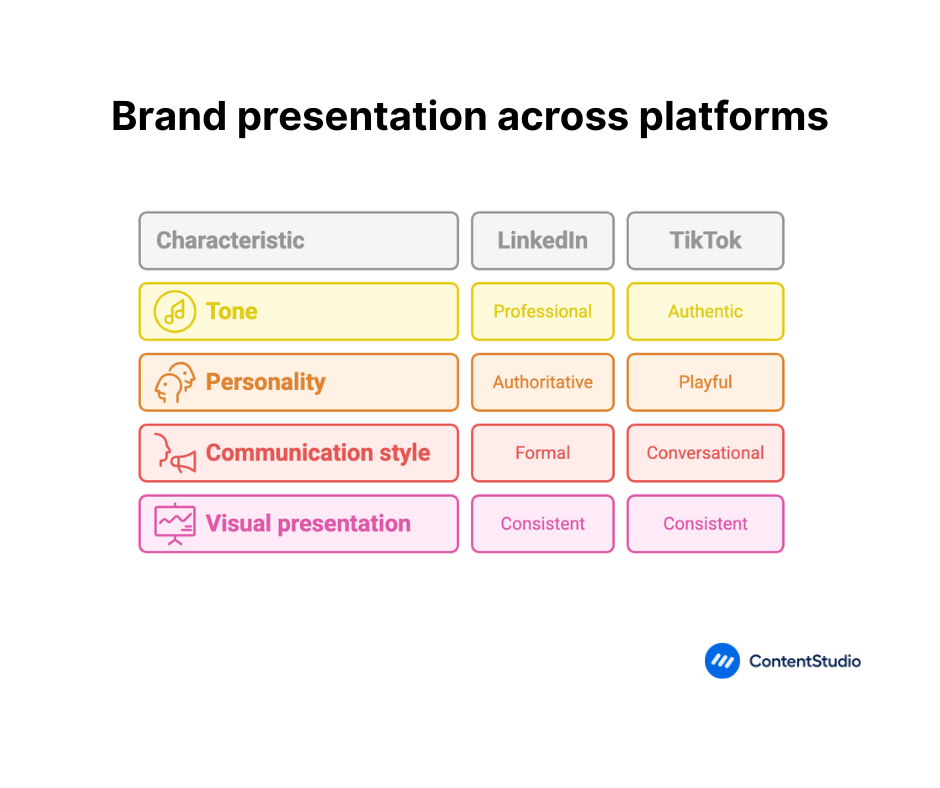
Step 9: Budget planning and resource allocation
Effective budget planning ensures you can execute your strategy while maximizing return on investment. Allocate your budget across four main categories:
- Content creation (40%)
- Advertising and promotion (35%)
- Tools and software (15%)
- Team and training (10%)
Track ROI through revenue attribution, cost efficiency metrics like cost per acquisition (CPA), and return on ad spend (ROAS). Focus on metrics that directly tie to business outcomes rather than vanity metrics that don’t impact your bottom line.
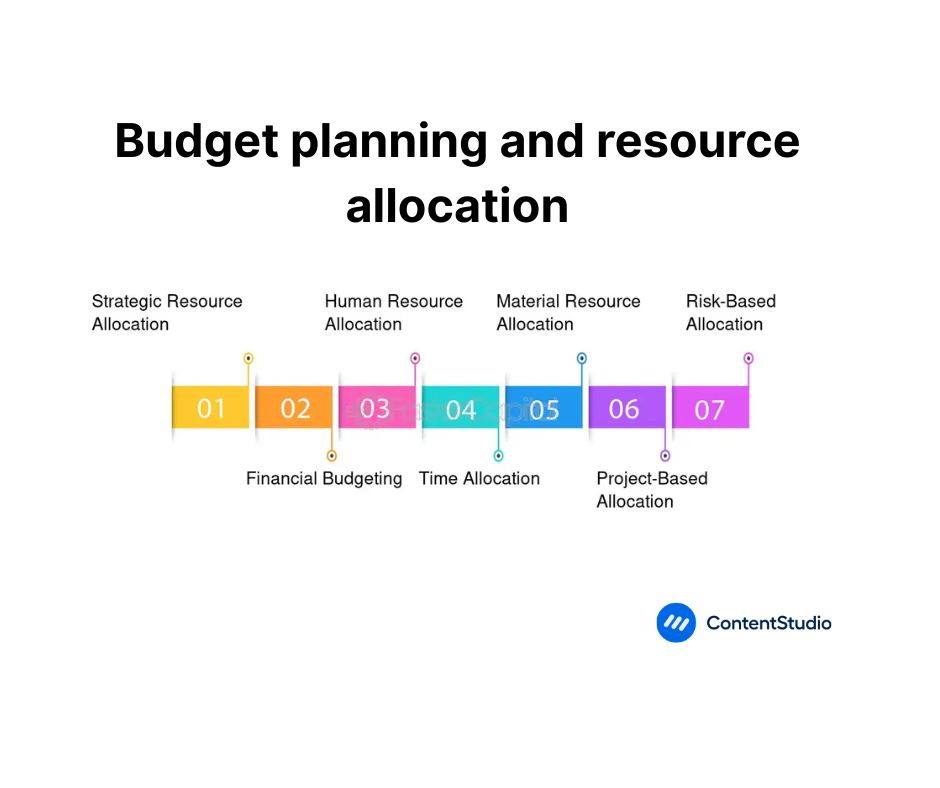
Step 10: Implementation and workflow management
Streamlined workflows ensure consistent execution and quality control across all social media activities. Define clear roles:
- The social media manager handles strategy and performance,
- The content creator focuses on visual production
- The community manager manages daily engagement and customer service.
Establish a content creation workflow with distinct phases: planning (monthly strategy review, content ideation), creation (asset production, copywriting, quality review), and publishing (scheduling, real-time monitoring, performance tracking). This systematic approach prevents bottlenecks and ensures consistent quality.

Step 11: Measurement and analytics
Effective measurement goes beyond vanity metrics to focus on business impact and ROI. Track essential KPIs, including:
- Engagement metrics (likes, comments, shares, saves),
- Reach and awareness (follower growth, impressions, brand mentions)
- Traffic and conversions (click-through rates, website traffic, lead generation)
- Customer service metrics (response time, resolution rate, customer satisfaction).
Utilize native platform analytics, such as Instagram Insights and Facebook Analytics, for platform-specific data, and combine them with third-party tools like Usermaven, ContentStudio, or Replug for comprehensive cross-platform reporting and in-depth insights.
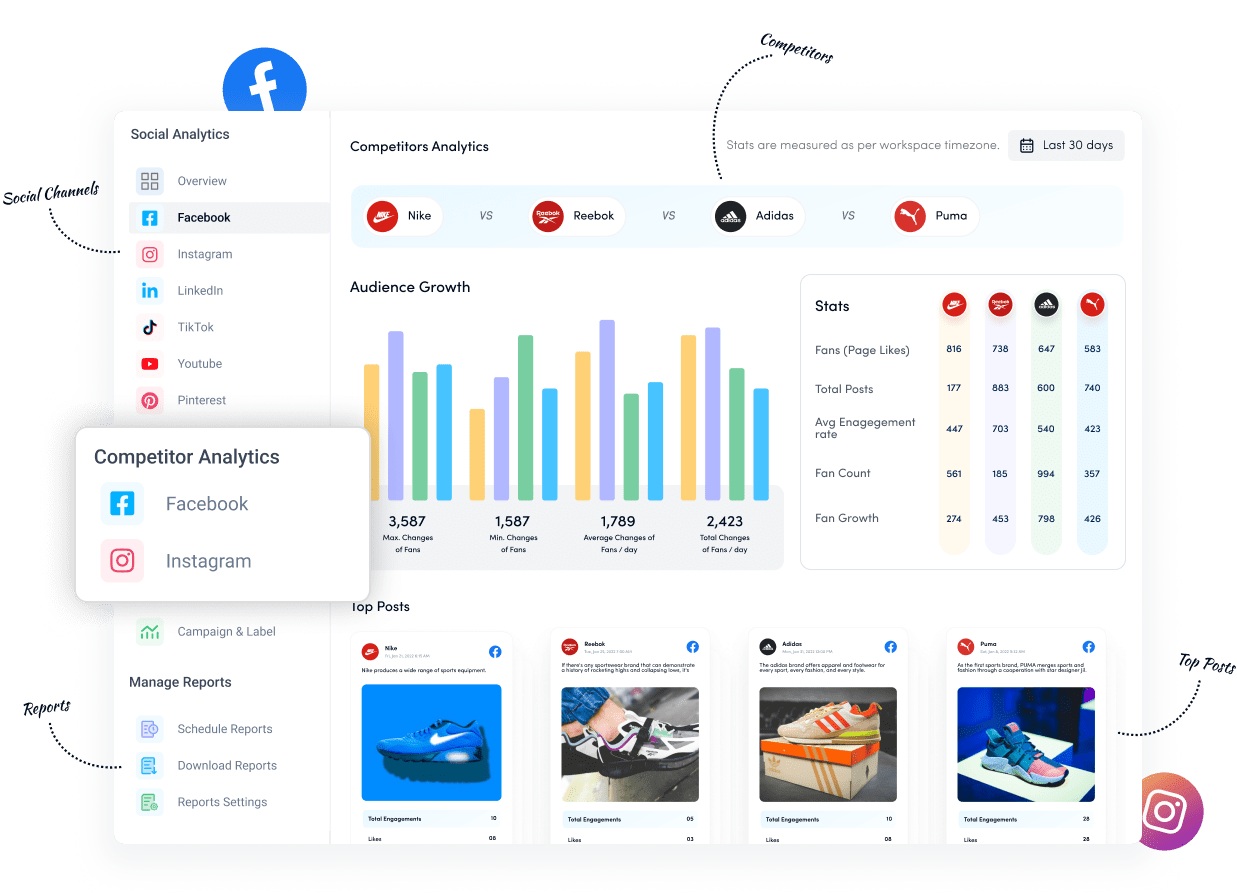
2025 social media marketing trends to include
Stay ahead of the curve by incorporating these emerging trends into your strategy.
- AI and automation are transforming content creation and customer service. Use AI-generated visuals, automated captions, and smart scheduling optimization. Implement AI-powered chatbots for instant customer responses and predictive service interventions.
- Social commerce continues to evolve with platform shopping features, including Instagram Shopping, Facebook Shop, and TikTok Shopping. Focus on live shopping events, augmented reality try-on experiences, and influencer-driven product launches.
- Authentic content and transparency build stronger connections. Share behind-the-scenes content, employee spotlights, and company culture. Build niche communities through user-generated content campaigns and interactive experiences.
- Video-first strategies dominate engagement. Prioritize short-form vertical videos optimized for mobile, quick tutorials, trend-based content, and live video sessions for real-time audience interaction.
Social Media Analytics Fine-tune your social media strategy for success with in-depth analytics and white-labeled reports.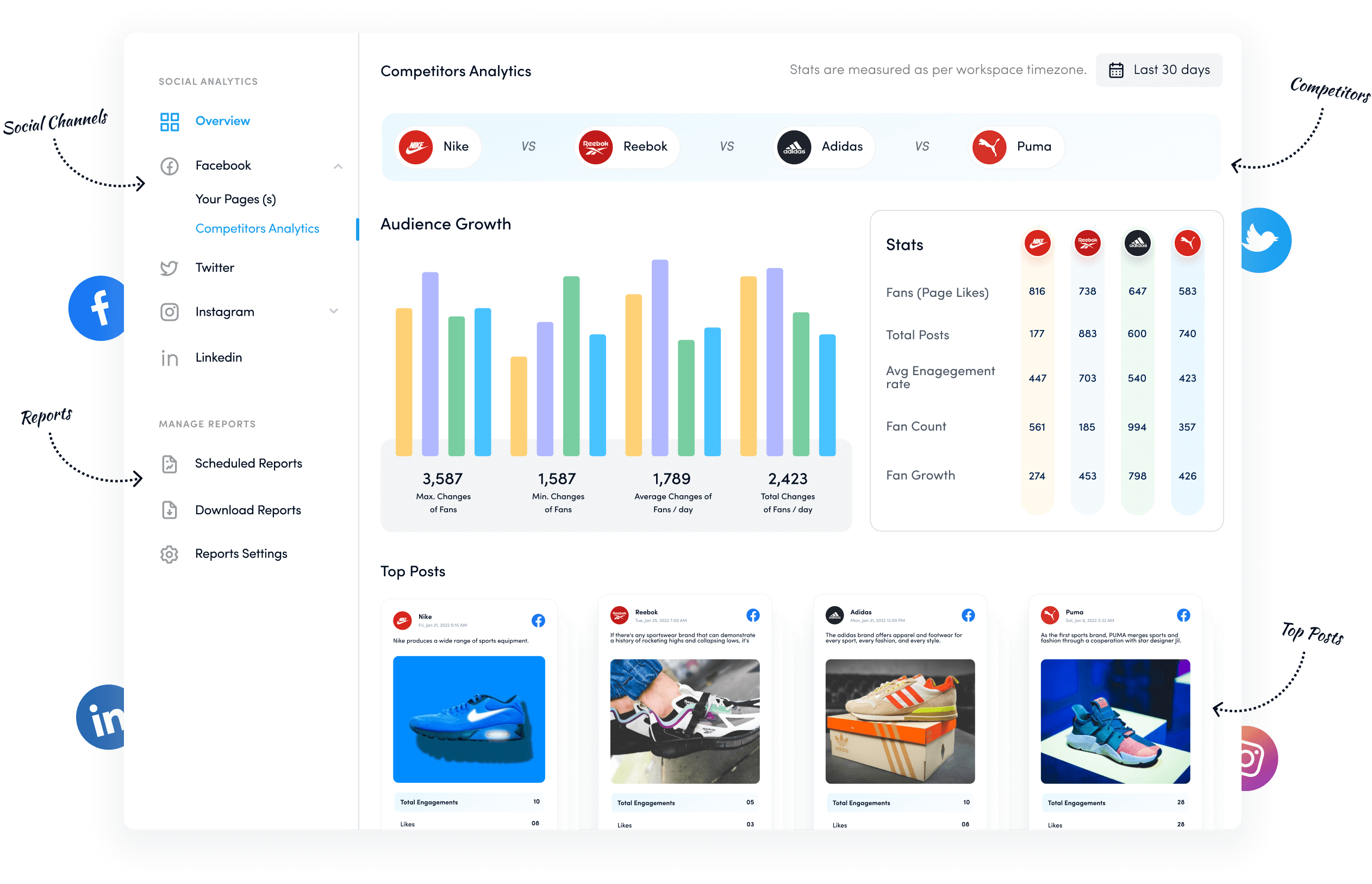
Conclusion
Creating a successful social media marketing plan requires strategic thinking, consistent execution, and continuous optimization. By following this comprehensive guide, you’ll be equipped to:
- Develop clear, measurable goals that align with your business objectives
- Create engaging content that resonates with your target audience
- Choose the right platforms and optimize your presence for maximum impact
- Measure success accurately and optimize for continuous improvement
FAQ’s
1. What is a social media marketing plan?
A social media marketing plan is a comprehensive document that outlines your brand’s social media objectives, target audience, content strategy, platform selection, budget allocation, and measurement framework. It serves as your roadmap for achieving measurable business results through social media.
2. What should be included in a social media marketing plan?
Your plan should include business objectives and KPIs, target audience personas, competitive analysis, platform selection and strategies, content calendar and themes, brand voice guidelines, budget allocation, team responsibilities, and analytics framework.
3. How much should I budget for social media marketing?
Most businesses allocate 10-20% of their total marketing budget to social media. A typical breakdown: 40% for content creation, 35% for advertising, 15% for tools and software, and 10% for team training and development.
4. What are the most important social media KPIs to track?
Focus on business-impact metrics: engagement rate, reach and impressions, click-through rate, conversion rate, lead generation, website traffic from social, customer acquisition cost, and return on ad spend (ROAS).
5. How do I create engaging social media content?
Follow the 80/20 rule: 80% valuable content (educational, entertaining, inspirational) and 20% promotional. Use storytelling, ask questions, share behind-the-scenes content, leverage user-generated content, and respond to comments promptly.
6. How do I create a social media marketing plan for my business?
Follow these 11 steps: conduct a social media audit, define clear goals, research your target audience, analyze competitors, choose the right platforms, develop a content strategy, create a content calendar, establish a brand voice, plan your budget, implement workflows, and set up measurement systems.
